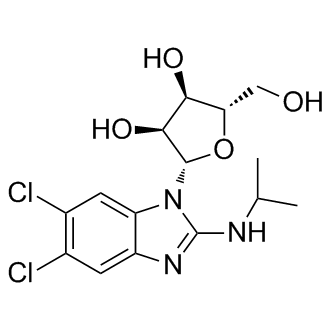| DC31074 |
Isopropyl myristate
|
Isopropyl myristate is the ester of isopropyl alcohol and myristic acid. |
| DC75202 |
Fosaprepitant free acid
|
Fosaprepitant, also known as MK0517, is an antiemetic drug, administered intravenously. It is a prodrug of aprepitant. Fosaprepitant was developed by Merck & Co. and was approved. It is a prodrug of Aprepitant. It aids in the prevention of acute and delayed nausea and vomiting associated with chemotherapy treatment. Fosaprepitant is a weak inhibitor of CYP3A4, and aprepitant, the active moiety, is a substrate, inhibitor, and inducer of CYP3A4 |
| DC74557 |
PREX-in1
|
PREX-in1 is a specific small-molecule inhibitor of P-Rex1 and P-Rex2 Rac-GEF activity with IC50 of 4.5 uM (P-Rex1 DHPH Rac-GEF activity) in liposome-based GEF assay, inhibits P-Rex1 and P-Rex2 through their catalytic DH domain. |
| DC74555 |
GYS32661
|
GYS32661 (GYS 32661) is a potent Rac inhibitor capable of inhibiting both Rac1 and Rac1b, inhibited activated Rac1 with IC50 of 1.18 uM in in vitro pull-down assays. |
| DC74540 |
MTX-3937
|
MTX-3937 is a small-molecule inhibitor targeting Siglec-9 (Sialic acid-binding immunoglobulin-type lectin-9), a member of the Siglec family of immunomodulatory receptors. Siglec-9 is primarily expressed on immune cells, such as myeloid cells and natural killer (NK) cells, and plays a role in regulating immune responses by transmitting inhibitory signals through its intracellular immunoreceptor tyrosine-based inhibitory motifs (ITIMs). |
| DC74539 |
L557-0155
|
L557-0155 is a small molecule inhibitor of VSIG-8, prevents VSIG-8 binding to VISTA, promotes cytokine production and cell proliferation in PBMCs and suppresses melanoma growth. |
| DC74528 |
K284
|
K284 is a selective small molecule inhibitor of chitinase 3 like1 (CHI3L1) with strong binding affinity (Kd=-9.7 kcal·mol-1), inhibits lung metastasis by blocking IL-13Rα2-mediated JNK-AP-1 signals. |
| DC74225 |
YB-537
|
YB-537 (YB537) is a potent, highly specific quinone reductase 2 (QR2) inhibitor with IC50 of 3 nM, shows no activity against QR1 (IC50>10 uM). |
| DC74224 |
XST-20
|
XST-20 is a small molecule that selectively targets the DNA-binding domain (DBD) of FOXM1, atranscription factor involved in cell cycle progression, proliferation, and cancer development. Witha surface plasmon resonance (SPR)-derived binding affinity (Kd) of 20 uM, XST-20 effectivelysuppresses FOXM1's transcriptional activities, making it a promising candidate for targetingFOXM1-driven cancers, such as ovarian cancer. |
| DC74223 |
X-Neu5Ac
|
X-Neu5Ac (sodium) is a substrate for chromogenic assay of neuraminidase activity in bacterial expression systems; with a Km of 0.89 mM for neuraminidase. |






















